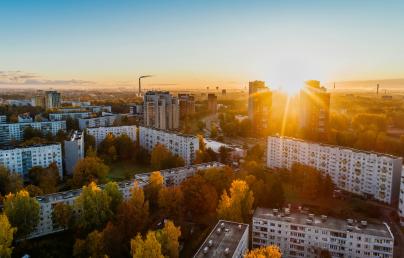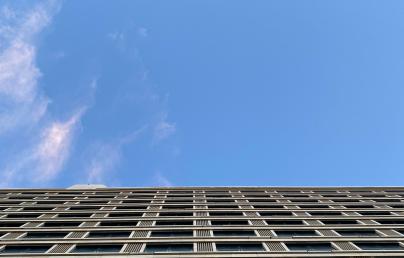Solar panels can heat the local urban environment, systematic review reveals

Solar panels can heat the local urban environment, systematic review reveals
A systematic review of 116 papers looking at how solar panels affect the surrounding environment has found that they can significantly warm cities during the day. This heating can also affect the performance of the photovoltaic (PV) systems, the study found. The researchers suggest future work should focus on increasing the reflectance of wavelengths of sunlight not converted to electricity. Lead author of the review, David Sailor of Arizona State University, explains why.
Why was there a need for a systematic review like this?
I was frustrated that there have been a handful of publications that have introduced inaccurate representations of the energy balance of PVs in the urban environment and have, as a result, made claims about the potential for PVs, for example, to cool the urban environment when, in fact, the energy balance is much more complex and the implications for the urban environment are correspondingly complex.
What research did you include in your study?
We felt that it would be useful to provide a more holistic viewpoint of PVs in the environment. We wanted to understand not just how putting PV systems in the urban environment affects buildings and urban air temperatures and so forth, but also – the other end of that equation – how the urban environment affects the performance of PV systems.
What did you find?
We arrived at several key conclusions. One had to do with PVs and their relationship with the urban energy balance. Specifically, we found that PVs can significantly warm the urban environment during the day, but typically cool the urban environment at night.
The second key finding was that, for a number of reasons, when you put PVs in an urban setting, they don’t perform as well as they might in some other settings, rural and suburban, for example.
Why do solar panels have this heat effect on the urban environment?
It’s important to put all of my discussion on this topic in the context that it depends on what you’re comparing a particular application to. So, the example would be if you put PVs on an existing black roof, you’re not having as much of an adverse effect on the urban thermal environment as if you put those PVs on a white roof, because a white roof would normally be a relatively cool surface.
When you put PVs on that white roof, the PV panels typically absorb in the order of 90% of the energy of the Sun. And the PV panels then do convert some of that energy to electricity, but typical panels today are only maybe 16–20% efficient. These panels are absorbing a tremendous amount of energy from the Sun, converting some of it into electricity, but then warming up because they’re not able to use all of the energy.
So, these PV panels tend to be rather hot surfaces in the environment. They’re almost always installed in an elevated format – above a roof surface or above ground level in a field. And as a result, you end up having two hot surfaces, the top surface of the panels and the underside surface of the panels. And so, as air flows over these panels, it readily picks up that heat essentially twice as effectively as it would if you had the same temperature on a building surface or a ground surface.
Read the full interview here.


